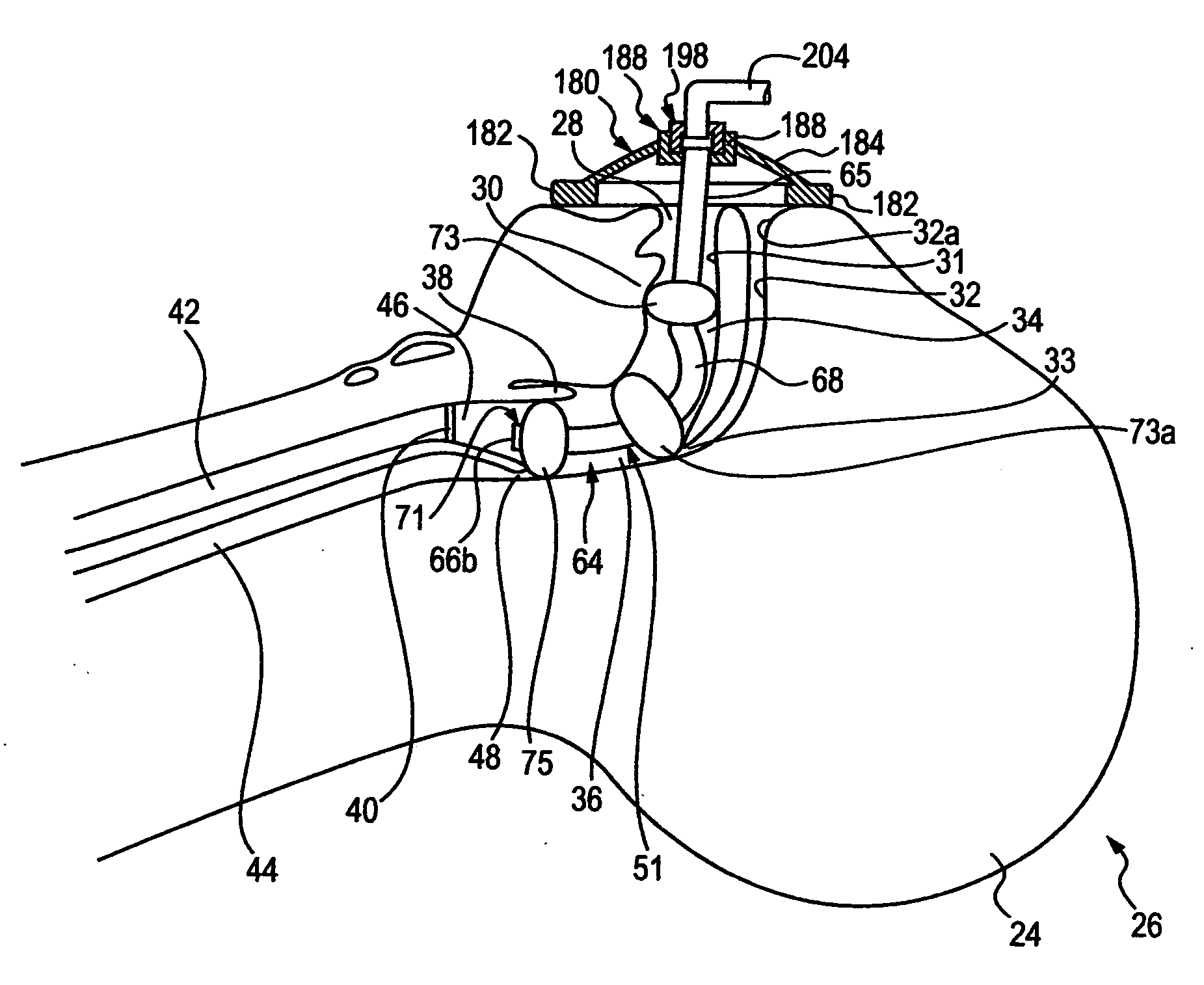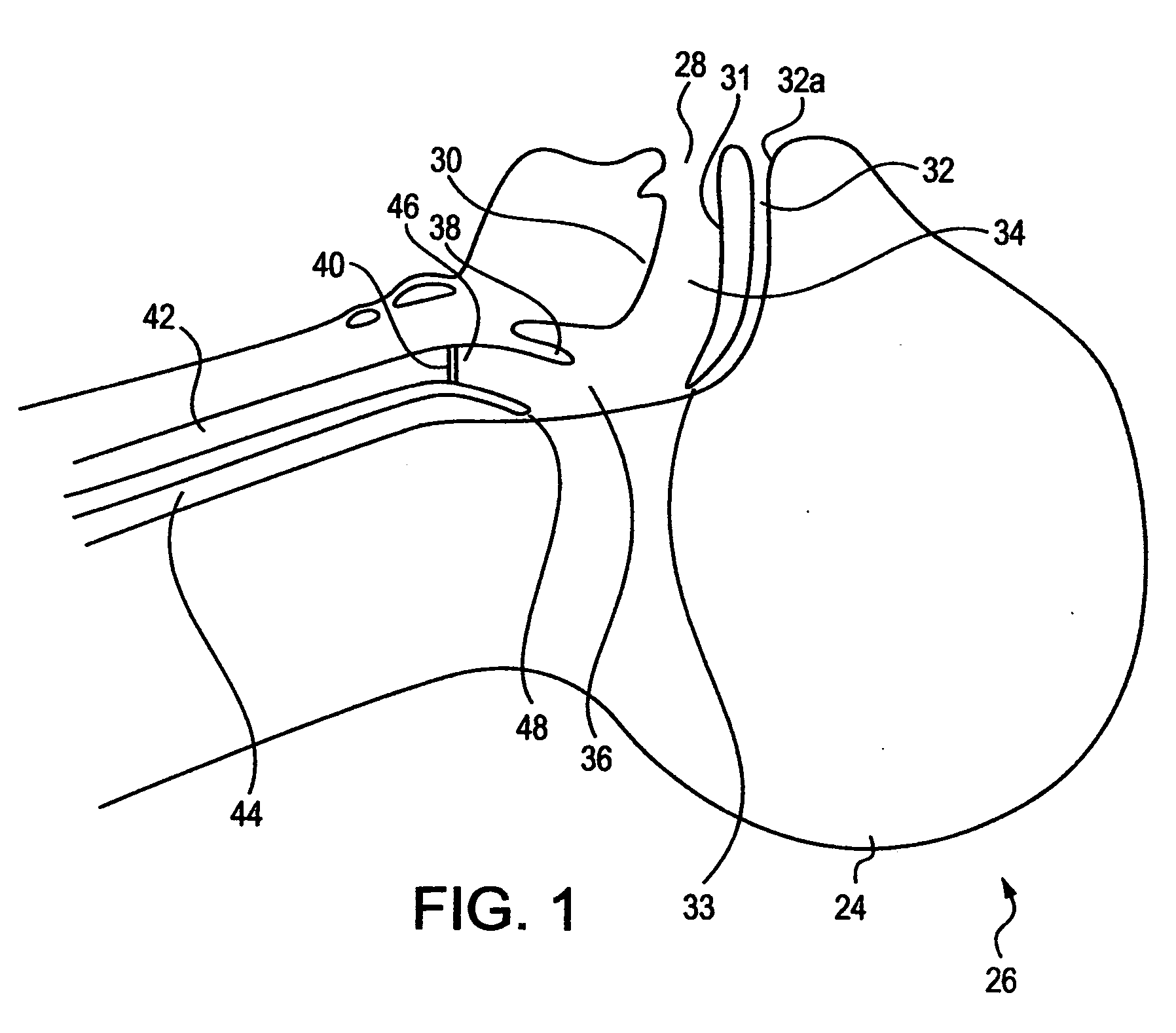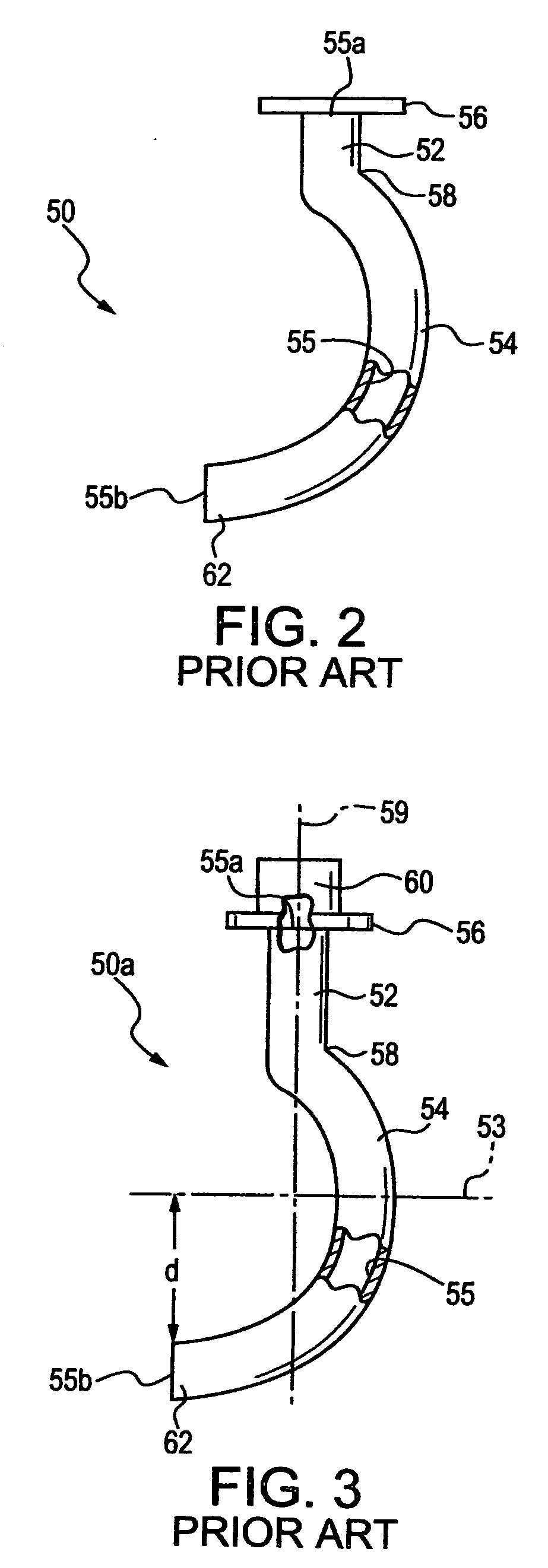Airway device and methods of making and use thereof
- Summary
- Abstract
- Description
- Claims
- Application Information
AI Technical Summary
Benefits of technology
Problems solved by technology
Method used
Image
Examples
first embodiment
[0043]Referring to FIG. 4, in an inventive airway device, an extended airway device 64 includes a tube 51 formed in an extended configuration. The tube 51 is formed with a hollow passage 66 extending between, and including, a proximal opening 66a of the passage, at a proximal end 65b of the tube, and a distal opening 66b of the passage, at an extended distal end 71 of the tube. The airway device 64 includes some features similar to those of the device 50a (FIG. 3), and further includes improvements embodied in certain principles of the invention of the airway device 64. Thus, the airway device 64 provides a device for those who wish to use an airway device having features similar to the device 50a, but with some of the advantages and benefits of the invention as described and set forth herein.
[0044]In one aspect of the invention, the tube 51 of the airway device 64 is formed with a straight section 65, about a centerline 59a, or central axis, having an extended peri-lingular length,...
second embodiment
[0054]As shown in FIG. 5, in an inventive airway device, a hook-shaped airway device 64a includes a tube 79 formed in a hook-shaped configuration. The tube 79 is formed with a hollow passage 77 extending between, and including, a proximal opening 77a of the passage, at a proximal end 70a of the tube, and a distal opening 77b of the passage, at a distal end 82 of the tube. The tube 79 of the airway device 64a is formed with a straight section 70, and a curved section 72. The straight section 70 extends from a flange 74 to a juncture 76 of the straight section with the curved section 72, with an adapter 78 extending outward from the flange.
[0055]Without departing from the spirit and scope of the invention, the length of the straight section 70, of the device 64a, could be consistent with the above-described limited peri-lingular length of the prior art devices 50 (FIG. 2) and 50a (FIG. 3), or the length of the straight section 70 could be consistent with the extended peri-lingular len...
third embodiment
[0069]Referring to FIG. 6, in an inventive airway device, a J-shaped airway device 64b includes a tube 89 formed in a J-shaped configuration. The tube 89 is formed with a hollow passage 91 extending between, and including, a proximal opening 91a of the passage, at a proximal end 92a of the tube, and a distal opening 91b of the passage, at a distal end 102 of the tube. The tube 89 of the airway device 64b is formed with a straight section 92, and a curved section 94. The straight section 92 extends from a flange 96 to a juncture 98 of the straight section with the curved section 94, with an adapter 100 extending outward from the flange.
[0070]Without departing from the spirit and scope of the invention, the length of the straight section 92, of the tube 89 of the device 64b, could be consistent with the limited peri-lingular length of the prior art devices 50 (FIG. 2) and 50a (FIG. 3), or with the extended peri-lingular length of the device 64, as described above and as shown in FIG. ...
PUM
 Login to View More
Login to View More Abstract
Description
Claims
Application Information
 Login to View More
Login to View More - R&D
- Intellectual Property
- Life Sciences
- Materials
- Tech Scout
- Unparalleled Data Quality
- Higher Quality Content
- 60% Fewer Hallucinations
Browse by: Latest US Patents, China's latest patents, Technical Efficacy Thesaurus, Application Domain, Technology Topic, Popular Technical Reports.
© 2025 PatSnap. All rights reserved.Legal|Privacy policy|Modern Slavery Act Transparency Statement|Sitemap|About US| Contact US: help@patsnap.com



